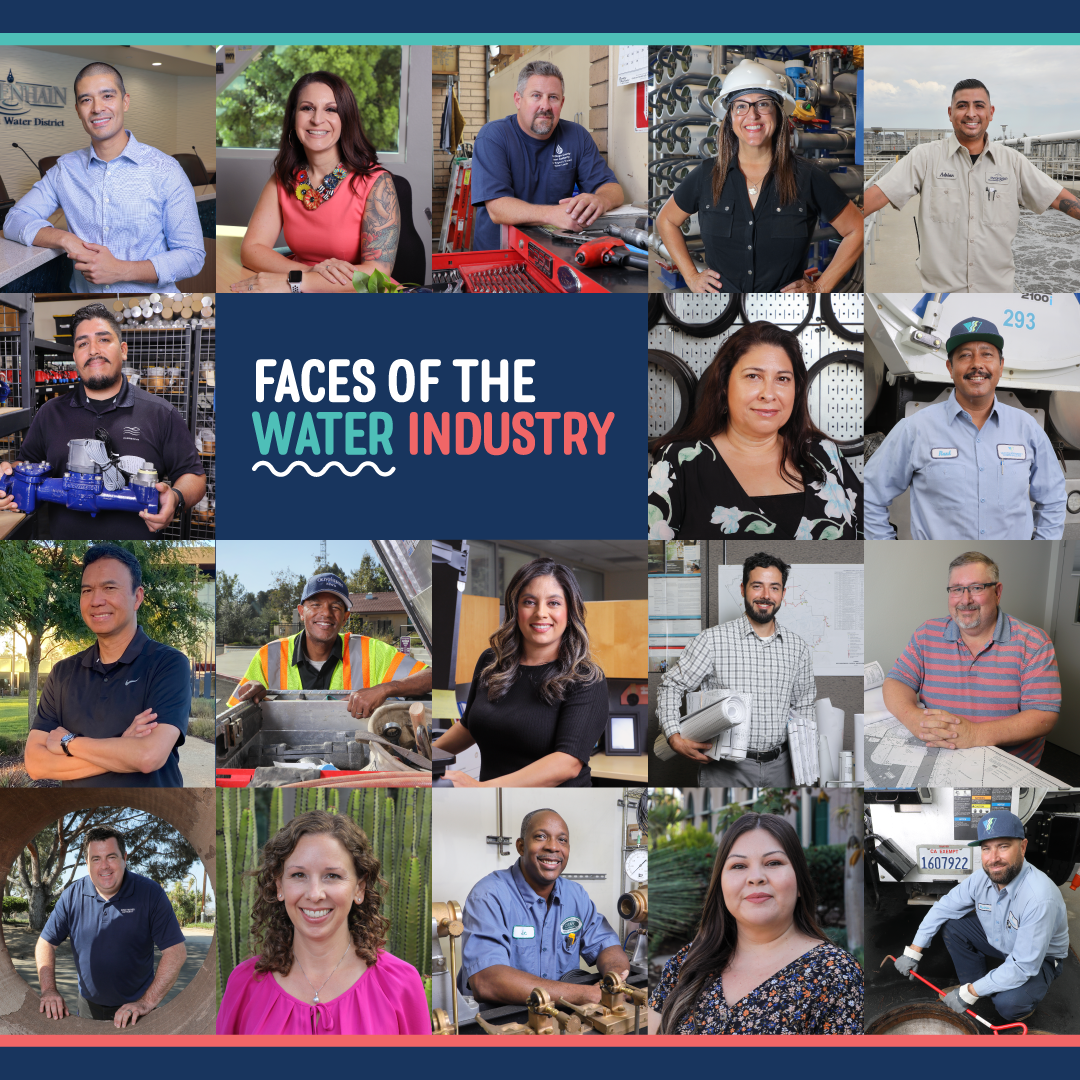Water and wastewater professionals across San Diego County are highlighted in October during the San Diego County Water Authority’s “Faces of the Water Industry” campaign. Each year, the Water Authority collaborates with its member agencies to showcase regional water industry employees and career opportunities through a series of social media posts and videos.
Since 2017, the Water Authority’s annual campaigns have highlighted nearly 200 employees in San Diego County across multiple water agencies and job types. The 2022 campaign started October 1, coinciding with California’s Water Professionals Appreciation Week (October 1-9).

The 2022 Faces of the Water Industry campaign features stories from 18 San Diego County water industry professionals in a series of social media posts and videos. Follow the Water Authority on Instagram (@sdcwa) to read more inspiring stories from the region’s water and wastewater pros – the Faces of the Water Industry.
California Virtual Water Career Fairs
The water and wastewater industry offers vast opportunities in engineering, operations, finance, public affairs, human resources, administration and information technology. New and current water professionals can learn more about the industry in an upcoming series of free virtual career fairs hosted by various agencies in October.
For more job openings, internships and education opportunities across the San Diego region’s water and wastewater industry, go to sandiegowaterworks.org.



